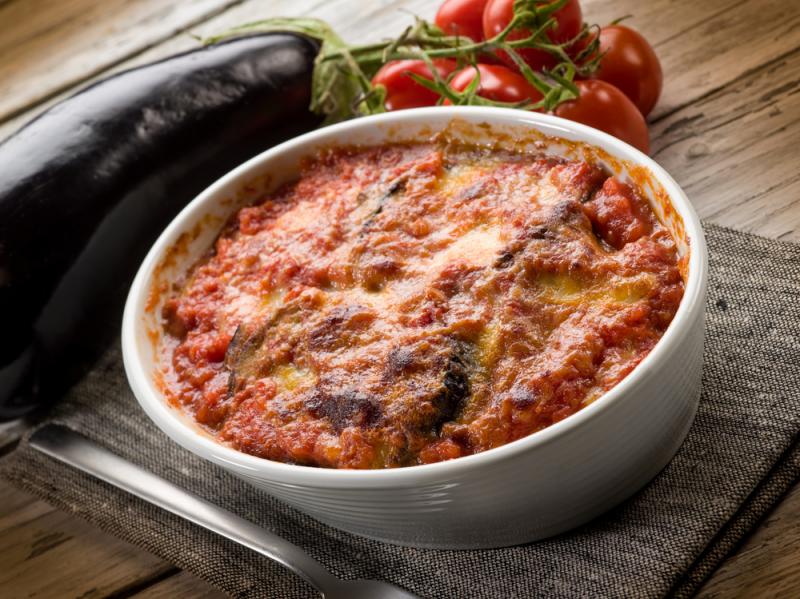Parmigiana di Melanzane

It is certain that food is the number one, or maybe number two, cause for wars and bitter disputes. I am not talking about the obvious fights over resources or price peaks, but about the ownership of recipes! Who owns mousaka: Greece or Turkey? What about hummus, Lebanon or Israel? Or canard a' l'orange, Italy or France? It is often difficult to establish the origins of a dish, not only when it sits on the border of two countries with similar traditions and geography, but even when there is a sea in between and such difficulty has generated plenty of “conflicts” and misunderstandings.
Having recently come across the description of Parmigiana di Melanzane as a typical dish from Northern Italy, I could not keep quiet about the true origins of this wonderful summer dish! I am sure that every Sicilian proudly knows that it is part of the island cultural heritage and that every cookbook lists it as one of the specialties from Sicily together with cannoli and cassata.
The correct name of the dish is in fact “Parmigiana” and not “Melanzane alla Parmigiana,” which could let one think that it originated in Parma and was made with Parmesan. Parmigiana is the Italianized name of parmiciana which, in Sicilian, means the lattice method of arranging the planks of wooden shutters. As a matter of fact, the slices of aubergine (eggplant), which constitute the key and main ingredient of the dish, are disposed in layers transversally to each other. This means that, being Sicilian, there should be neither Parmesan nor mozzarella, which appears in certain recipes. The cheese that gives that typical pungent taste and contrast the sweetness of the aubergines is primo sale, a mature pecorino, a sheep’s (pecora) milk cheese. Only three ingredients make up the real Parmigiana: aubergines, cheese, and basil. It could not be simpler!
Here it is the recipe for all those of you who want to bring a little bit of Sicily into their kitchens (quantities for a medium tray).




